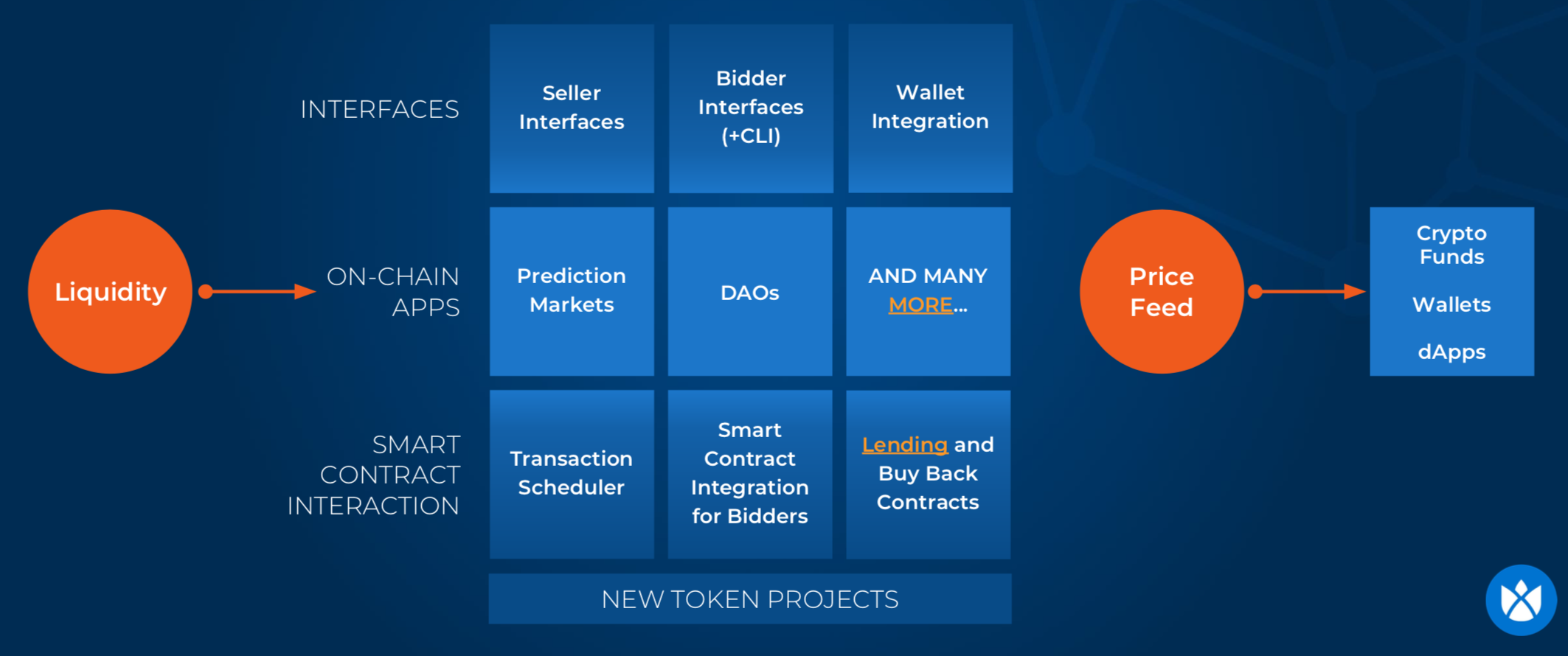DutchX as an open protocol¶
The DutchX is 100% open source and has been built as a community effort to improve the problems that current centralized and decentralized platforms face.
The DutchX is an ecosystem of interfaces, on chain apps, and smart contracts that create a common liquidity pool that all users can benefit from.
 Open Protocol
Open Protocol
Smart contracts¶
The core of the project is the Smart Contracts, which hold the logic described in the Smart Contract Documentation, and can be found in https://github.com/gnosis/dx-contracts
The smart contracts are the base of this open protocol, and anyone can build tools, applications and interfaces on top of them, making the DutchX a unique and fair protocol to exchange tokens.
The main contracts are:
- DutchExchange.sol: This contract contains all the Dutch Auction mechanisms. It includes the logic for adding a new token pair, posting a sell order, or a buy order.
- DutchExchangeProxy.sol: This contract acts as an intermediary between the users and the core contract. This contract is the one holding the data of the DutchX, so it’s the one we should use to interact with the DutchX. Please, read more about the Proxy Pattern for Smart Contracts in this Solidity DelegateProxy post.
Security was the main focus on the design and implementation of the DutchX. Check out this Security in DutchX document for more information.
Services, API, Bots and CLI¶
Another important piece of the DutchX is the DutchX services project.
This project uses the smart contract as a base layer, and builds some repositories, services and utilities on top of it.
This project may be split into different smaller ones in the future.
It has the following parts:
- Repositories: Abstraction on top of the smart contracts to make it easier
to interact with them. For example, they add the same validations that are going
to be performed in the smart contract, so they can throw more meaningful errors,
instead of the
revertthat smart contracts throw by default. - Services: Some use cases built on top of the DutchX. The CLI, Bots and API use this layer to perform all its tasks.
- API: REST Api that provides a simpler access to the data in the DutchX. Check out the API documentation
- CLI: The Command Line Interface is a very useful tool to invoke some
operations in the smart contracts such as posting sell/buy orders, and
extracting information from them (for example getting the status of a token
pair).
It can be used in test nets like
rinkebyor inmainnet. Learn more about the CLI page. - Bots: The bots are a series of small applications that run in the background and have a scoped task to fulfill. They interact with the DutchX performing some operations. For example the liquidity bots watch some markets and provide liquidity, ensuring that auctions run continuously and that prices don’t drop below market price. Learn more about bots in the following guide. Run your own bots
Contribute¶
The community is what makes the DutchX great.
Become part of it and contribute to create new interfaces, improve tools, and spread the word.
Meet the community on Github and our Gitter channel.